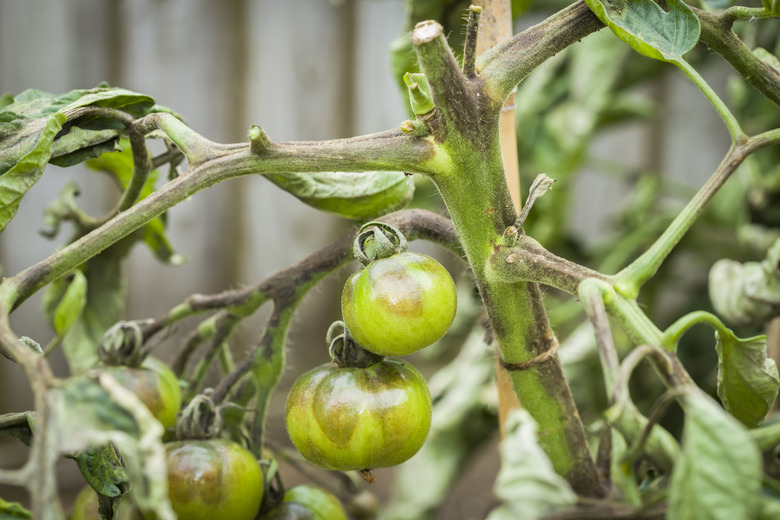How To Kill Blight In Garden Soil
We may receive a commission on purchases made from links.
Blight, like southern blight, is a soilborne fungal disease, and once it infects a garden, it can make for a disappointing growing season, especially if you are growing edibles. The fungi prey on plants, with the result being poor fruiting and eventual death. Since blight affects so many different plant types, it can be hard to control, and most products that treat the problem are only labeled for commercial use. Soil solarization will kill the fungus, but it will take a bit of time and patience.
Characteristics of Blight and Solarization
Characteristics of Blight and Solarization
Southern blight is a serious disease affecting a wide range of plants, with the soilborne fungus Sclerotium rolfsii responsible. The fungus affects vegetables, turfgrass, fruits, field crops, and ornamentals. Environmental conditions encouraging the development of the disease include warm temperatures between 75 and 85 degrees Fahrenheit, acidic soils, and wet weather conditions. The fungus attacks portions of the plants that touch the soil or those just below the soil, producing white fungal strands on the infected sections of the plant as well as on the soil.
When first infected, a plant's lower leaves become discolored and wilt, and eventually, the plant collapses and dies. Because southern blight affects more than 500 plants from 100 different plant families, the disease is hard to control once it appears, and preventing the problem is the best course of action. Because the disease affects so many different types of plants, it makes crop rotation to prevent the problem difficult, and the fungus can reside in the soil for several years.
Cultural practices that prevent or reduce southern blight include plowing the soil deeper than 3 inches, preventing the fungus from germinating, amending the soil with lime or calcium nitrate to raise the pH, or using plastic mulch to create a barrier between the plant and the soil. However, the high temperatures the soil experiences from solarization will kill the fungus as well as any weed seeds, so solarization is the best option for getting rid of the blight. Fungicidal products to treat the fungus are only available commercially and are not for residential use. Solarization is best done in summer when temperatures are at their hottest.
Things Needed
How to Use Solarization to Kill Blight
1. Clean the Garden Location
Clean the garden area by raking and removing any weeds, grasses, or garden debris before treating the soil.
2. Prepare the Garden for Planting
Amend the soil with any necessary amendments prior to solarizing the soil. If you start plowing the area afterward, there's a possibility that you will bring any lingering fungus back to the top of the soil and infect plants you'll be planting in the area. Rake the area smooth.
3. Prepare the Plastic Covering
Measure the garden area where clear plastic polyethylene will be used. Allow an extra 12 inches on all four sides, which will be used to anchor the plastic in place. You can now cut the plastic to the correct size.
4. Wet the Soil
Saturate the area with water using a garden hose before installing the plastic. The moist conditions along with the heat from summer's intense temperatures will assist in killing the blight fungus.
5. Install the Plastic Covering
Install the plastic once you've prepared the location and the soil is wet. Lay the plastic over the area and secure the sides by piling soil on top of them. Make sure the sides are fully secure to keep the area airfree, which assists in retaining the heat and moisture.
6. Leave the Plastic in Place
Allow the plastic covering to remain in place for three or four weeks so it can completely kill the blight fungi. The longer you allow the plastic covering to remain in place, the better your chances of killing the blight.
